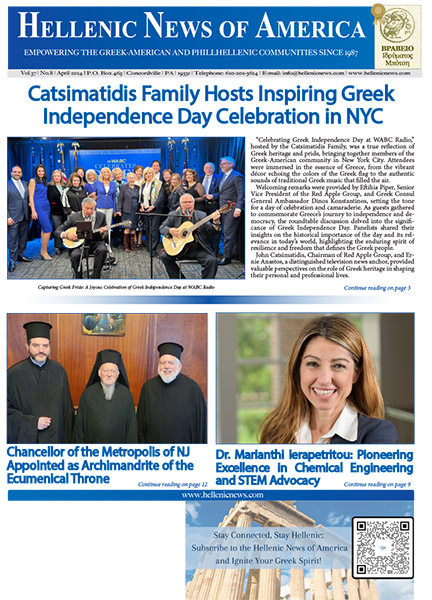On icons of St Nicolas, our Lord and Saviour will often be seen on one side with the Gospels in His hand, and the most holy Mother of God on the other with an Episcopal stole in hers. This has a twofold historical significance: it denotes, firstly, Nicolas’s calling to Episcopal office, and secondly his vindication and re-instatement following the punishment for his clash with Arius. St. Methodius, Patriarch of Constantinople, writes: “One night, St Nicolas saw our Saviour in glory, standing by him and holding out to him the Gospels adorned with gold and pearls, and the Mother of God standing on his other side and placing a pallium on his shoulders.* Shortly after this vision, John, the then Archbishop of Myra, died, and Nicolas was installed as Archbishop of that city.’ That was the first occasion. The second occurred at the time of the First Ecumenical Council in Nicaea. Unable to put a stop by argument to the senseless blasphemy of Arius against the Son of God and His most pure Mother, St Nicolas struck Arius in the face. The holy fathers at the Council strongly disapproved of such behaviour, and they banned Nicolas from the Council and stripped him of all marks of his Episcopal rank. That very night, several of the fathers had the selfsame vision: how the Lord stood on one side of Nicolas with the Gospels and the Mother of God on other with a pallium, offering to the saint those marks of rank that had been stripped from him. Seeing this, the fathers were amazed, and quickly returned to Nicolas that which they had taken from him. They began from that time to respect him as a great man, and to interpret his action against Arius not as some senseless rage but as the expression of great zeal for God’s truth.
– From The Prologue from Ochrid: Lives of the Saints and Homilies For Every Day In The Year- Part Four: October, November, December by Saint Nikolai Velimirovich, Translated by Mother Maria, Birmingham, UK, Lazarica Press, 1986.
——————
* My note: The pallium, known as the omophorion in Greek, is “one of the bishop’s vestments..worn about the neck and around the shoulders. It signifies the Good Shepherd and the spiritual authority of a bishop.” (From “A Dictionary of Orthodox Terminology” by Fotios K. Litsas, https://goarch.org/ourfaith/ourfaith9152).





